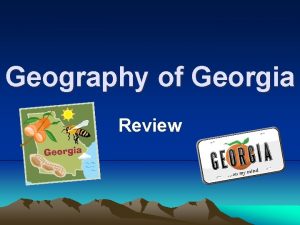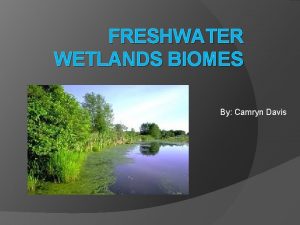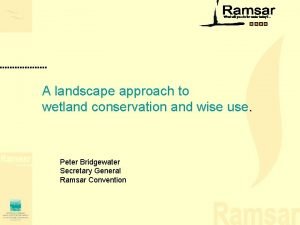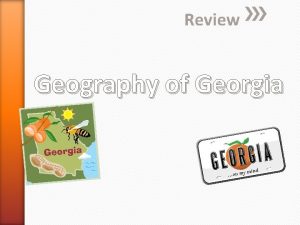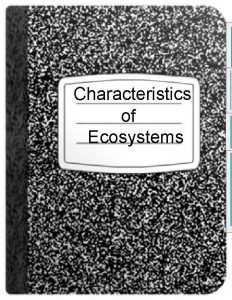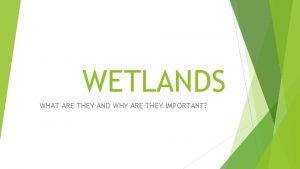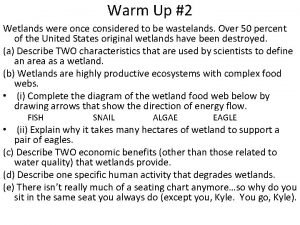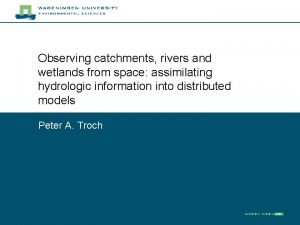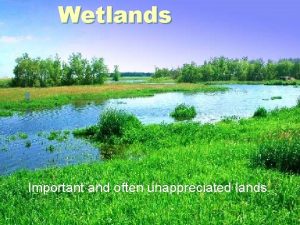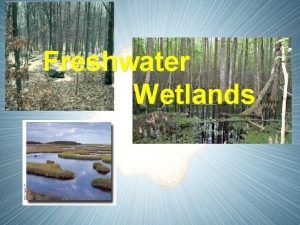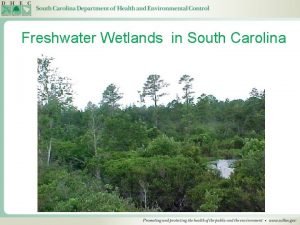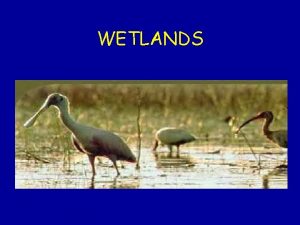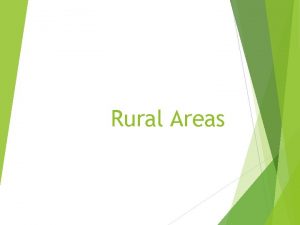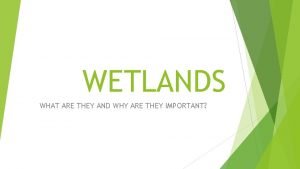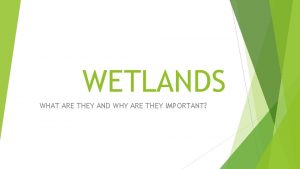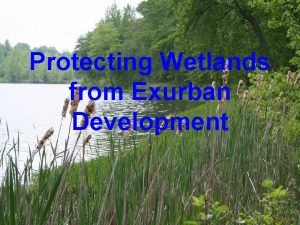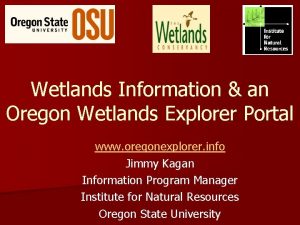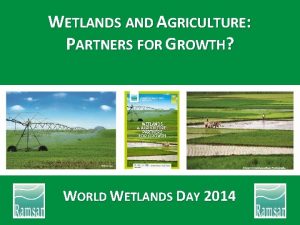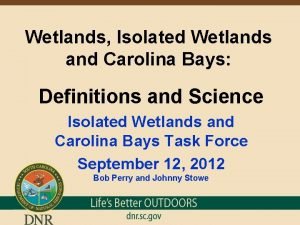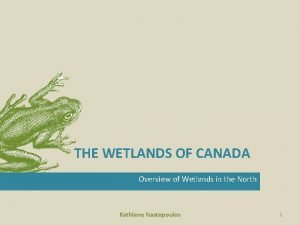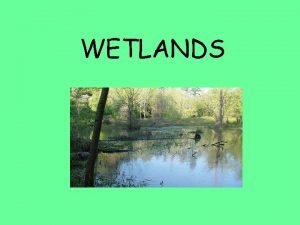Wetlands What are they Wetlands 1 Wetlands areas














- Slides: 14

Wetlands: What are they?

Wetlands 1) Wetlands areas where water covers the soil, or is present either at or near the surface of the soil all year, or at different times during the year. 2) Have soil that is “hydric, ” or that can hold water (High clay content or low permeability) 3) Have “wetland” plants and animals. (Permeable= the ease with which water passes through a porous material)

Marsh

Wetland Types MARSHES have standing water from less than an inch to several feet deep; usually shallow with few floating plants. Plants: cattails, grasses, sedges, rushes, arrowhead, pickerel weed, and smartweed; critical for many fish species that live and/or breed there. Marshes offer primary breeding and feeding habitat for water birds (ducks, geese, herons, cranes, rails) and song birds like the marsh wren and yellow warbler, numerous frog species, reptiles (turtles, water snakes), and mammals such as muskrats, beaver, and otter. In Michigan, marshes are found at the edge of some rivers and lakes. They are a transition between land water.

Salt River Marsh Restoration, Chesterfield, MI 6. 7 million dollars- water quality; wildlife

Swamps

Swamps A swamp is any wetland dominated by trees. characterized by saturated soils during the growing season, and standing water during certain times of the year. serve vital roles in flood protection and nutrient removal. Examples of plant life includes cypress trees, red maples, buttonbush or alder shrub Animals may include wood ducks, river otters, cottonmouth snakes

Bogs

Bogs characterized by spongy peat deposits, acidic waters, and a floor covered by a thick carpet of sphagnum moss. High level of organic material; highly acidic serve an important ecological function in preventing downstream flooding by absorbing precipitation bogs support a number of species of plants including Cotton Grass, Cranberry, Blueberry, Pine, Labrador Tea, and Tamarack. Moose, deer, and lynx are a few of the animals that can be found in northern bogs. The Greater Sandhill Crane, the Sora Rail, and the Great Gray Owl depend on bogs for survival.

Fens

Fens, are peat-forming wetlands that receive nutrients from sources other than precipitation: usually through drainage from surrounding groundwater movement. Fens differ from bogs because they are less acidic and have higher nutrient levels. often covered by grasses, sedges, rushes, and wildflowers

Why are wetlands important? Biologic diversity Flood control Beauty Groundwater recharge Place to fish or hunt Place for migrating waterfowl

FILTER AND CLEAN WATER!! Nickname- Kidneys of the water cycle!! Many wetland plants can suck up contamination like a straw: cattails-bullursh-water hyacinths

Storm water control Instead of muddy water running directly into the streams and causing sediment problems, muddy water is directed into a wetland area, filtered naturally, then slowly discharged back into the stream.
 Antigentest åre
Antigentest åre Abowd and beale framework example
Abowd and beale framework example Types of menus in hci
Types of menus in hci Areas of the screen that behave as if they were independent
Areas of the screen that behave as if they were independent Where is the appalachian plateau located in georgia
Where is the appalachian plateau located in georgia Climate of freshwater wetlands
Climate of freshwater wetlands Conservation of wetlands
Conservation of wetlands Which statement best describes georgia’s barrier islands?
Which statement best describes georgia’s barrier islands? Bill nye rivers and streams answers
Bill nye rivers and streams answers Why are wetlands important for biodiversity
Why are wetlands important for biodiversity Wetlands were once considered to be wastelands
Wetlands were once considered to be wastelands Wetlands
Wetlands Why are wetlands important
Why are wetlands important Freshwater wetlands purify water by
Freshwater wetlands purify water by They have not rejected you
They have not rejected you




